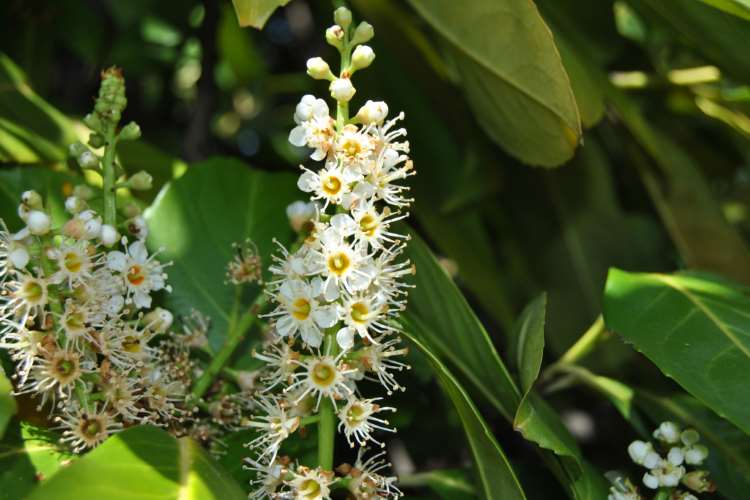
Cherry Laurel
Prunus laurocerasus
Family and description
Belonging to the Rosaceae family, Prunus genus, Prunus laurocerasus is an evergreen shrub or small tree that can reach 8 meters in height and has a very branched crown, with divergent branches. The trunk has a dark-brown bark with numerous protrusions.
The leaves are elongated and spear-shaped, with a rounded base and a slightly toothed margin, smooth and stiff, dark green, glossy on the upper surface.
The white flowers appear in April and are arranged in bunches of 8 to 13 cm long. They are aromatic, small flowers, with 5 petals of about 4mm.
The fruit is a drupe, similar to a cherry, which appears between July and August and is grouped in bunches. The colour varies between green, at first, red and finally black when ripe.
Origin and habitat
This species is native to south-eastern Europe and Asia Minor. Cultivated and sub-spontaneous in temperate climates, it can appear in luminous hardwood groves and shady slopes.
It tolerates dryness and shade and it prefers moist, deep soils, rich in organic matter.
Uses and curiosities
This species is a “cousin” of the almond tree, peach, cherry plum, apricot, sweet cherry, etc.
The name “cherry laurel” has to do with the similarities of the leaf with that of the laurel and the fruit of the cherry tree, species of the same family and genus.
It is a toxic species, since it has high levels of prussic acid in its branches and leaves. However, the fruits are edible (seeds excluded) and are highly appreciated by birds that, through their ingestion, spread the seeds, thus contributing to their spontaneous propagation.
It is a species with medicinal properties, used in homeopathy as a tranquilizer for the nervous system.
Introduced as an ornamental plant in Portugal and Southern Europe, it is widely cultivated in gardens and parks, being used in hedges and topiaries, as it withstands pruning well.
